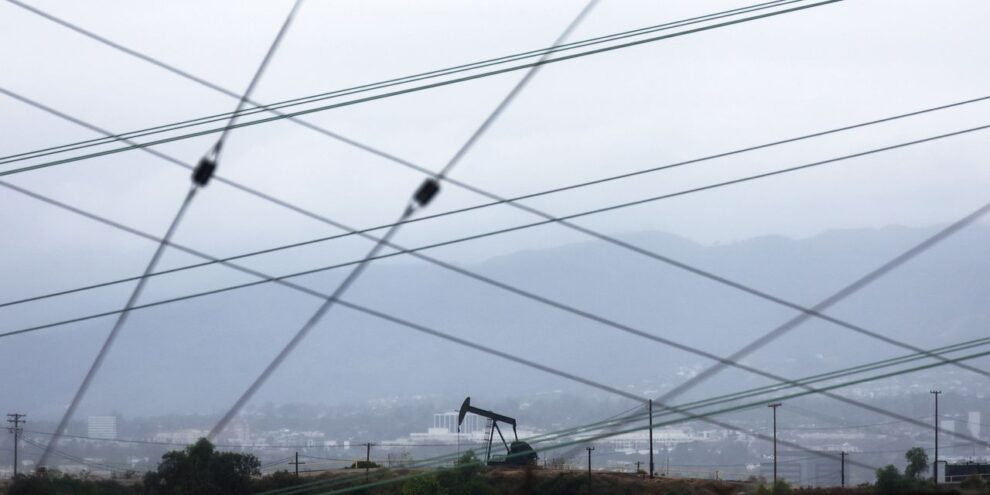
Oil futures surrendered early gains on Tuesday, brought on by supply disruptions in Libya, to finish with a loss.
Traders weighed news developments linked to the Iran nuclear deal, a waiver extension allowing U.S. banks to process Russian energy transactions, and a report that a U.S. senator intends to propose a federal surtax on certain oil companies in a move to curb inflation.
Natural-gas futures, meanwhile, settled at a five-week low after Freeport LNG said its damaged export facility for liquefied natural gas isn’t expected to return to full plant operations until late this year.
Price action
- West Texas Intermediate crude for July delivery CL.1, -2.26% CL00, -2.26% CLN22, -2.26% fell $2, or nearly 1.7%, to settle at $118.93 a barrel on the New York Mercantile Exchange after trading as high as $123.68. Prices for the front-month contract ended Tuesday at the lowest since June 6, according to Dow Jones Market Data.
- August Brent crude BRN00, -0.66% BRNQ22, -0.66%, the global benchmark, lost $1.10, or 0.9%, at $121.17 a barrel on ICE Futures Europe, the lowest finish since June 7.
- Back on Nymex, July gasoline RBN22, -1.39% fell 1% to $3.9938 a gallon, while July heating oil HON22, +1.80% gained 2.6% to $4.394 a gallon.
- July natural gas NGN22, -15.80% declined by 16.5% to $7.189 per million British thermal units — the lowest front-month contract finish since May 9, FactSet data show.
Market drivers
Oil prices reversed course in Tuesday trading, giving up early gains to finish with a loss.
Iran said Tuesday that it believes that negotiations can succeed to revive the 2015 nuclear deal with world powers, according to a report from The Times of Israel. A revival of the deal would lead to more oil from Iran on the global market.
The U.S., meanwhile, announced an extension of a waiver that enables U.S. banks and financial institutions to process transactions involving Russian energy to other countries.
Also, the U.S. Energy Department announced contract awards related to the Strategic Petroleum Reserve on Tuesday, as well as a fourth emergency sale of crude oil from the reserve.
Those news developments contributed to a turn in the tide for oil prices Tuesday, said Phil Flynn, senior market analyst at The Price Futures Group,
Bloomberg also reported that a U.S. senator may propose a plan to impose a federal surtax on certain oil companies in a move to curb inflation. Flynn, however, said the news was more likely to send oil prices higher.
Still, Tyler Richey, co-editor at Sevens Report Research, believes that if there was a surtax imposed, “it might incentivize companies to revisit their upstream operations in order to add revenue.”
In that case, “new oil supply coming back online in the U.S. is slightly bearish but imposing excess taxes on energy companies in the U.S. will not likely fix the supply and demand imbalance in the global market right now,” he said.
Oil prices had also seen a midday reversal on Monday, when they shifted from a loss to a gain, recovering amid a report that Libya’s crude-oil production may have fallen more than one million barrels per day due to political turmoil, analysts at Zaner wrote in a Tuesday newsletter.
Libyan Oil Minister Mohamed Oun told Bloomberg on Monday that the country’s daily output was down about 1.1 million barrels, implying that Libya is pumping only around 100,000 barrels a day.
At the same time, Chinese COVID concerns are “casting a shadow over energy markets, and this may keep further gains in check until there are clear signs of progress in dealing with Beijing’s current outbreak,” the analysts at Zaner said.
On Tuesday, the Organization of the Petroleum Exporting Countries left its forecast for 2022 growth in oil demand broadly unchanged at 3.4 million barrels a day. On the supply side, the organization revised down its forecast for non-OPEC liquids growth in 2022 to 2.1 million barrels a day, down by 250,000 barrels a day from its May estimate. That’s equal to the downward revision for Russia’s 2022 production, while the forecast for U.S. liquids supply growth was marginally unchanged at 1.3 million barrels a day.
The White House on Tuesday said President Biden will visit Saudi Arabia in July as part of a trip to the Middle East. The visit, which had long been speculated, is seen as an effort to mend relations with the kingdom.
Natural-gas prices were also a standout on Nymex Tuesday, with prices down by more than 16%.
The Freeport LNG news will be a “near-term headwind for U.S. natgas prices as it will add an estimated 2.0 [billion cubic feet per day] of supply to our domestic market until the facility resumes operations at full strength later in the year,” said Sevens Report’s Richey.
Still, on a longer time frame, the outlook for natural gas “remains bullish, especially on a global scale,” he said.






